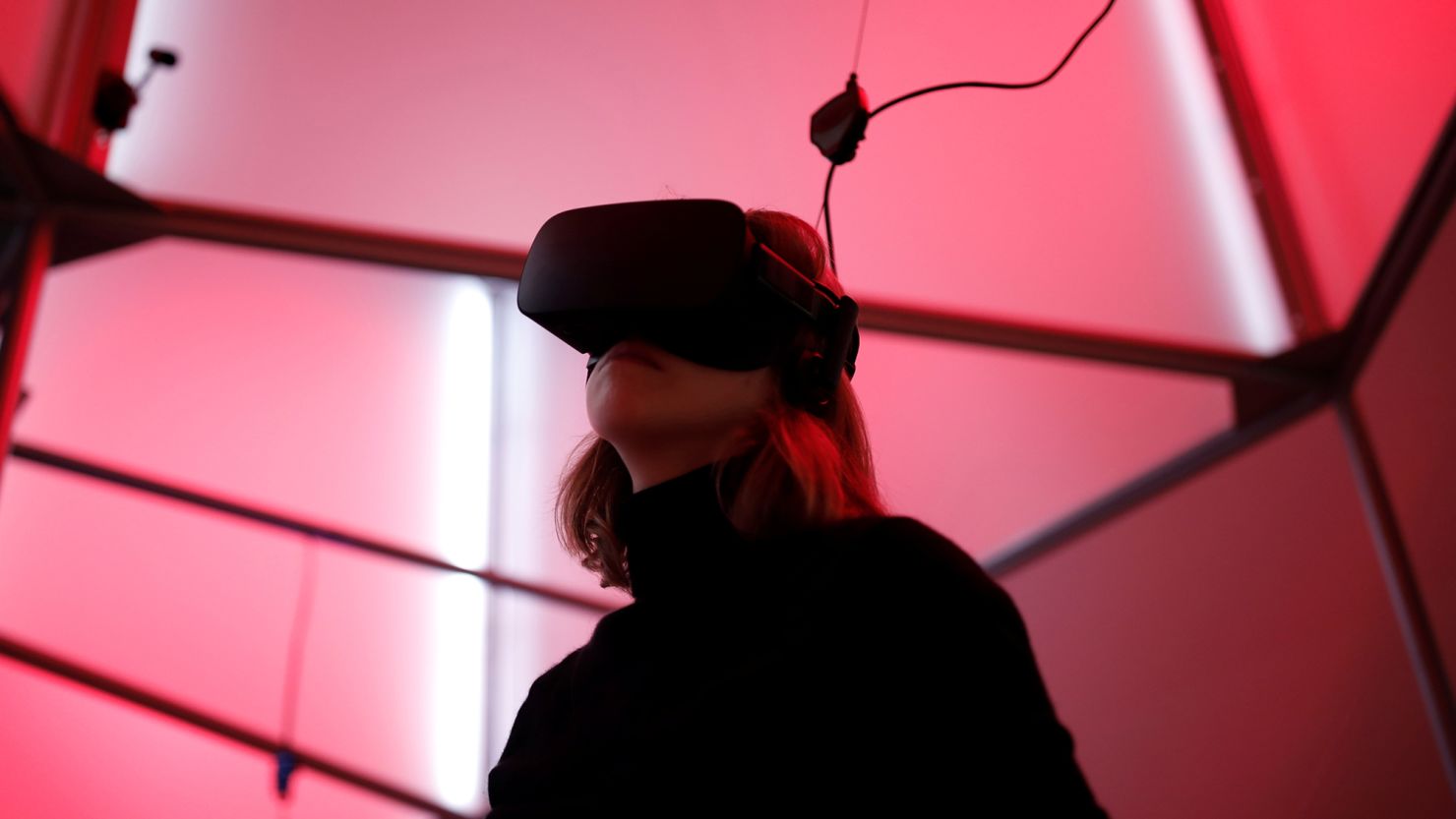Virtual reality (VR) may finally be on the brink of transforming the entertainment landscape, following years of anticipation since the debut of the Oculus Rift in 2012. As of 2025, significant developments suggest that the long-awaited integration of VR into mainstream entertainment could soon become a reality. Major tech companies, including Meta and Apple, are making strides to enhance user experiences and engage audiences in immersive storytelling.
Meta is reportedly in discussions with prominent entertainment entities such as Disney and A24 to create exclusive content for its Quest VR headsets. Additionally, Apple unveiled enhancements to its Vision Pro headset, allowing users to share content across devices, which is particularly advantageous for communal viewing experiences like 3-D movies. Earlier this year, Apple also hosted a virtual concert featuring the band Metallica, showcasing its commitment to immersive entertainment.
The combination of these moves indicates that tech giants are betting on consumer interest in engaging with concerts, films, and sports events through VR platforms. However, the industry has faced challenges, often likened to a chicken-and-egg dilemma: widespread adoption of headsets requires compelling content, while the development of that content hinges on a significant user base.
Over the past decade, headset manufacturers have released lighter and more advanced devices, yet the industry has struggled to establish a strong foundation for VR storytelling. Meta has previously offered virtual tickets to live sporting events, echoing its past collaborations with the NBA and WNBA. Despite these efforts, much of the content available has been experimental, serving primarily as a gauge of consumer interest rather than solid investments in VR.
According to Sarah Malkin, director of entertainment content for Meta’s VR division, the cycle of adoption is beginning to change. “I think the ‘it moment’ is when you are regularly engaging in experiences in mixed reality that are super complementary and part of your integrated life,” Malkin stated in a recent interview. This sentiment underscores a growing belief that VR could become a staple in entertainment consumption.
Recent data from IDC, a market intelligence firm, indicates that global shipments of augmented reality (AR) and VR headsets rose by approximately 10% in 2024, totaling 7.5 million units globally, with a significant increase of nearly 30.8% in the United States. Although a decline in shipments is expected this year due to product launch delays, IDC forecasts a substantial rebound in 2026, predicting a 98.5% surge to 11.3 million units.
Despite the promising indicators, the financial realities of the VR industry reveal a different story. Mark Zuckerberg’s Metaverse initiative has reportedly cost Meta $46 billion over three years, with Reality Labs, the VR division, posting a $4.2 billion operating loss and generating only $412 million in sales in the first quarter of this year. Nonetheless, tech companies continue to invest in VR, with Meta committing $3.5 billion to eyewear manufacturer EssilorLuxottica SA to support its augmented reality ambitions.
The competition in the XR landscape is heating up, as companies like Snap plan to release new AR spectacles, and Google collaborates with partners such as Xreal and Samsung to develop upcoming headsets powered by its new Android XR software. Samsung is set to be among the first to introduce a device under Project Moohan.
While the hardware is improving, the challenge lies in the creation of compelling content that resonates with audiences. Industry consultant Jenna Seiden emphasizes the need for tailored content development, stating that studios must create experiences specifically designed for immersive platforms rather than repurpose existing media. She notes, “You need to build natively so the audience is going to have a different experience per platform.”
Seiden further highlights the success of exclusivity in driving audience engagement, referencing the growth of platforms like HBO Max and Apple TV+, which attracted viewers with unique offerings. Live virtual sports events could serve as a significant entry point for audiences into the realm of extended reality, according to Paul Raphaël, co-founder of Felix & Paul. He argues that many sporting events are already broadcasted, making it easier to adapt them for immersive viewing experiences.
The shifting media landscape presents an opportunity for VR to establish itself as a vital distribution channel for premium content. As the industry grapples with changes brought about by streaming and evolving viewer habits, the emergence of a new medium could provide fresh avenues for revenue generation.
Investment in VR technology has lagged behind other innovations like artificial intelligence and self-driving vehicles. Funding data from Crunchbase shows fluctuating support for XR, with investments peaking at $4.087 billion in 2021 but dropping to $347.69 million by 2025. In contrast, AI-focused venture capital has seen a consistent increase, reaching $130.89 billion in 2025.
Despite these challenges, industry experts suggest a renewed interest in XR funding as the potential of mixed reality becomes clearer. As Bertrand Nepveu, a partner at Triptyq Capital, articulates, “Now that AI is more understood, you know what it’s good for, what it’s not capable of, the budgets now are going back into XR.”
The path forward for VR hinges not only on technological advancements but also on convincing consumers of the value of these devices. Apple’s emphasis on the Vision Pro as a spatial computing tool, focusing on productivity in addition to entertainment, reflects a strategic approach to garnering interest.
Despite the uncertainty surrounding the timing of VR’s breakthrough moment, experts remain optimistic. Raphaël predicts that widespread adoption could occur within one to two years, while others suggest a timeframe of three to seven years. Seiden anticipates a longer horizon of five to ten years.
As the industry evolves, the potential for VR to reshape content consumption looms large. Raphaël suggests that the future of media may render traditional 2-D experiences as obsolete as black-and-white films are today. He states, “Content, the way it is consumed today, is going to be much like we think of black and white movies, where, if a film isn’t immersive, it doesn’t lose its value, but it becomes something of another era.”
